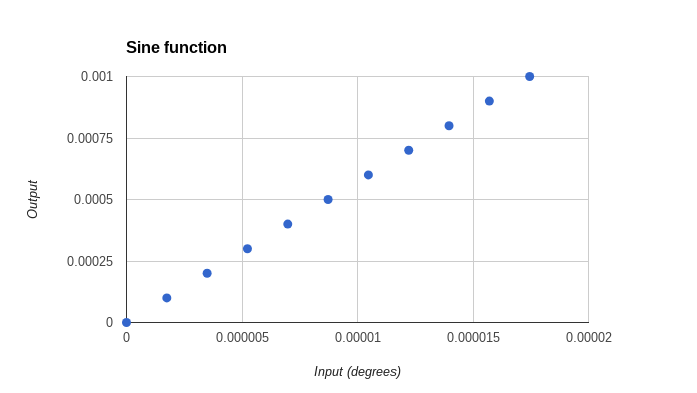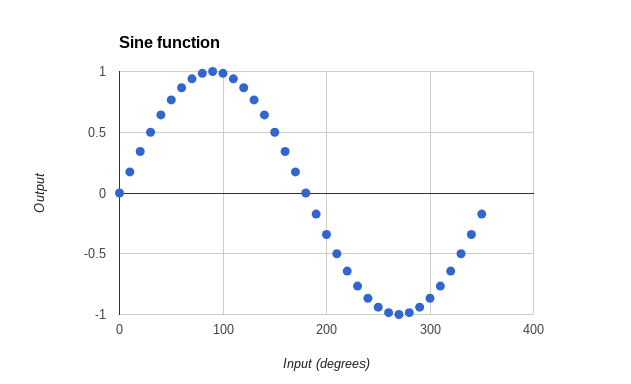
Yes. It is ketchup.
Bill Nye and I both love the wetlands. I just wish we could agree on where they came from.
If we could at least agree that we are both people of faith, I think that would be a good start. I believe that when creationists debate evolutionists, the fundamental clash is a worldview clash. It’s really about two opposing “closed intellectual systems”, as Al Mohler put it. We might say “Paleontology is more than just paleontology.” But Bill Nye disagrees with me even on that:
“And on CSI [the crime show], there is no distinction made between historical science and observational science. These are constructs unique to Mr. Ham.”
In other words: Paleontology is just paleontology.
This is what I want to respond to today. And before I go further, I want to acknowledge the readers out there who have been told all their lives that origins science is just as objective as other sciences, that atheism is the rational, faith-free, skeptical worldview, that all religion is just the opiate of the uneducated masses, or that religion can be a great tool for mental health but its truth claims should never conflict with the consensus of scientists. I know there are some of you who kind of believe these ideas simply because they’ve been hammered into (or subtly suggested to) you for as long as you can remember, but maybe you haven’t spent much time critically examining them. In other words, you don’t hate God, but it’s hard to see Him through the thick materialistic goggles that have been placed over your eyes. I want to ask you to really stop, and explore these claims with me here.
Let’s unpack Nye’s argument (and, of course, I encourage you to watch the whole debate yourself).
The implied premises:
- Forensic science produces accurate results
- Forensic science falls under the umbrella of observational science
- Forensic science does not require faith
- Forensic science is not considered “historical science”
- Like forensic science, origins science is focused on uncovering the past
The conclusion:
Origins science also produces accurate results, is observational science, does not require faith, and should not be called “historical science”.
I’m not convinced by his argument because, in short, origins science looks at a far wider time scale than forensics (Part 1 addresses this), and is far more ideologically charged (Part 2 will address this).
Please give me a chance to expand on that
First, origins science claims to uncover events billions of years in the past, whereas forensic science works on far shorter time scales.
Doesn’t matter! says Nye. The scientific laws that apply now apply in the past as well. OK. Let’s analyze that with a tiny tiny bit of math.
Models of the physical world are expressed in terms of various functions. A function is just a number machine…you put a number in and it spits a number out. For example, f(x)=x+1 is a function. The output is just 1 plus the input.
We can draw functions by inputting various numbers into them and recording the corresponding outputs, and then plotting each input-output pair on a graph. Here is a plot of the sine function. The input to this type of function is an angle (for example, 30 degrees, 90 degrees), so the inputs are expressed in degrees for this plot.

Here is another plot of the same sine function:

So, the two plots look very different right? But it’s the same sine function. What’s the difference? The range of inputs. Look back at the first plot. The inputs (the horizontally arranged numbers) range from 0 degrees to about .00002 degrees. Now look at the second plot. The inputs range from 0 degrees to 350 degrees.
The first plot looks very linear, and in various engineering applications, the sine function is actually treated like a perfect line. Over the range I plotted, it works really well, and it simplifies the math a lot. But as you can see, over a wider range of inputs, the function behaves completely differently! So, if your truth model happens to involve a sine function, and your input is a large angle, you’d better not treat the sine function like a line. Your results will be way off.
Let’s state this principle in more general terms: Sometimes a model of the physical world can work quite well under certain conditions, but completely break down under other conditions, even though the same underlying physical law is operating in both scenarios.
That is why I say to Mr. Nye, yes, it does matter that there is a massive difference in the time scale.
So, now we can ask some follow-up questions:
In origins science, do they basically take the same models used by forensic scientists and just exercise them over millions of years rather than a few months? If so, I’m sure you will understand my skepticism.
But what if origins scientists do have different models than forensic scientists? Or what if they use the same models, but claim some sort of justification for doing so? What if origins scientists have somehow identified that more broadly applicable “sine” function, which can be exercised over millions of years?
Well, that would be pretty cool. But it is still incumbent on us, as critical thinkers, to ask how that more broadly applicable model is validated.
But first, let’s ask the same question of forensic scientists, because it is much easier to answer.
With forensic science, how do you know your model is valid? How do you know it gives you accurate information about a particular crime? Well, I don’t know, because I’m not a forensic scientist. But let’s just think about this using common sense, and perhaps tapping into my experience with model validation in the engineering world. And to the forensic scientists out there: yes, please correct me!
More specifically, then: How do you validate your method for estimating the age of a bloodstain? Well, with all the murders that have been committed during our modern scientific era, we all know that in many cases, the age of the bloodstain is already known, without appealing to any model. Think about a drive-by shooting. Everybody knows when that blood was spilled. This provides a crucial ingredient in the validation of any model, whether it is in forensics, engineering, or any other field where a mathematical model is used: A check case. AKA a sanity check.
In other words, if you have developed a model for estimating the age of the bloodstain, go test it out on an actual bloodstain where the age of the stain is already known. You can even prick yourself, and wait x days, and test your model out on your own bloodstain. I know I am saying this all wrong to any forensic scientist who is reading this, but the basic principle I am advancing is sound. There have to be reliable ways to experimentally validate a bloodstain-age estimator. Otherwise, we might as well go back to trial by fire.
What if you have a model that tells you the angle of impact of a bullet on a wall, given the impression left on the wall by that bullet? Again, you can look at past crimes where the angle of impact was already known, and you can get a gun and shoot the wall yourself.
What if you have a model for estimating how long a corpse has been underwater? The list goes on…
When thinking about how to construct all these check cases, remember that in our modern age, many crimes are actually caught on camera! That could be a check case gold mine. We have cell phone cameras. We have CCTV. And we have eyewitnesses.
I hope I have made my point. Now let’s go back to origins science. We’ve already established that it’s very reasonable for us to ask origins scientists to provide some sort of validation of their models, beyond simply claiming that the models have been validated on forensic time scales. The time scales are just too radically disparate for that to satisfy us.
Again, I’m not an origins scientist, so I don’t know how they validate their models. I would love to know! What I do know, though, is that they have no video footage, no eyewitnesses, and no labs where they can conduct 5 million-year-long experiments. So where does their check case come from? If Nye provided the answer, I must have missed it. Please refresh my memory.
So, going back to this particular premise of Bill Nye’s:
- Like forensic science, origins science is focused on uncovering the past
I say, that is true, but (remember the sine function I showed) the origins past is so far separated from the forensic past that his conclusion simply does not follow.
In other words: Convicting the butler of murder is a far cry from convicting the universe of self-existing and self-organizing.
CONTACT INFORMATION
Mailing list / Email:
If you want to be notified when there is a new post, just email me at gmail.com with subscribe in the subject. There will be a new post every week or so. What’s my gmail username? Good question, it is theformofthefourth. If you don’t want to subscribe but still want to contact me, please feel free!
Comments:
Comments are super easy! Most comments will immediately be posted. You can use a fake email address and name if you want, I don't mind at all. I just want to hear from you

RSS:
On the side of the screen (or the bottom, depending on what device you're using), look for the "Meta" heading. Under that heading, there is one link for the entries feed (meaning, all my blog posts), and another link for the comments feed. Tap the one you want, and then use an app like flipboard or podcast addict to subscribe. I don't know about all the choices out there, but I use Podcast Addict to keep a steady stream of audio podcasts and blog posts flowing into my phone.
You have taken a complex concept and, through examples and illustrations, made it understandable to the lay person. You have also touched on a fundamental aspect of good science and engineering: modeling and model validation. Thanks for taking the time to guide us through the process of critically evaluating some of the assumptions used in origins science. I eagerly await “part 2”.
P.S. I’m reading this on my phone, so the font is pretty small. When I saw the first plot of the linear portion of the sine curve, I didn’t notice the scales on the axes and I thought you had mislabeled the plot. It looked to me like you had actually plotted the function f(x) = x+1. Pretty funny, because my lack of “attention to detail” (i.e. not being aware of the scales on the axes) just further emphasized the principle you presented… that the details (and scales) really do matter.
Thanks Victor. Now I’m even more motivated to write part 2!
Information Vs self knowledge: focus wisely
It’s been a long time since I took Historical Geology in college but this is what I remember about how the oldest items are dated. They use a gas chromatograph and use certain elements with known half lives (half lifes?) contained in the samples. I don’t remember if it’s the amount of the element present or just what, but it is supposed to support the multi-millions of years model.
Hi Kathryn, thanks a lot for your comment! How did you find my blog, if I may ask?
This is out of my field, but here’s what I would like to know about gas chromatography experiments that date a fossil or rock at millions of years old:
How do they know how much of the element was initially present?
How do they know that the only factor affecting proportion of parent isotope to daughter isotope was the decay process?
How do they know that the simple exponential decay model is good for millions and millions of years? Like the plot I put in the OP shows, a given math model can produce very accurate answers over a certain range, but completely break down over a wider range.
I got those questions from https://answersingenesis.org/age-of-the-earth/dating-methods/, but put them in my own words.
Very interesting topic. Thanks again for the discussion and God bless.
TFOTF